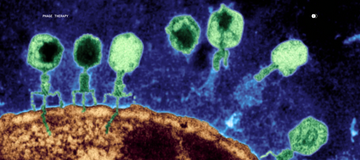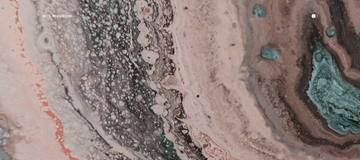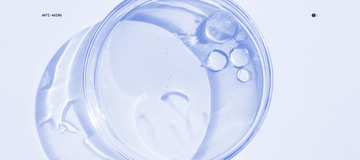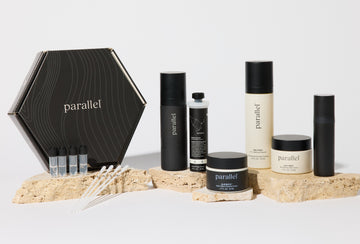What's the BEST microbiome test? Culturing vs. 16S vs. metatranscriptomics vs. WGS
by Parallel Health Team
So you're interested in testing your microbiome(s): gut, oral, vaginal, skin, and more. There are many different options from different companies. How do you know which one is best? Here, we break down what types of microbiome testing are available today. While we will discuss in the framework of skin microbiome testing, the technology applies across all microbiome testing.
From Cave Drawings to High-Resolution Photography
Traditional Bacterial Culturing: This is what most people have experienced at the doctor's office. A sample is collected and spread on a nutrient-rich medium to see what grows—a technique virtually unchanged since the 19th century. We still use this method today because it's clinically validated. If bacterial testing methods were visual art, culturing would be like a primitive cave drawing—rudimentary and showing only the most obvious features. While straightforward, this method has significant limitations. Many bacteria simply won't grow in lab conditions—in fact, scientists estimate that less than 1% of all bacterial species can be successfully cultured. This means we're missing 99% of what's actually living on your skin!
16S rRNA Sequencing: This technique represents a significant advancement. Rather than trying to grow bacteria, 16S sequencing identifies them by looking at a specific gene (16S rRNA) that all bacteria possess but varies between species. This allows us to detect bacteria that won't grow in cultures. Using our visual analogy, 16S is like a fuzzy black and white photograph—you can make out general shapes and features, but the details are blurry. It can tell us which bacterial families are present but often can't distinguish between closely related species or strains, some of which may be beneficial while others harmful.
Metatranscriptomics: Taking another step forward, metatranscriptomics looks at which genes are being actively expressed by microbes. This helps us understand not just which bacteria are present, but what they're actually doing. Are they producing inflammation-causing compounds or beneficial substances? In our visual comparison, metatranscriptomics is like taking a close-up color photograph of a specific element—much more detailed, but still focusing on just one part of the picture and potentially missing the broader context. While powerful, this method can be complex to interpret and doesn't always provide a complete quantitative picture.
Whole Genome Sequencing (WGS): This is where we enter the realm of precision microbiology. While still expensive, WGS reads the entire genetic code of all microorganisms in a sample, providing unprecedented detail about which specific strains are present and their functional capacities. Continuing our visual analogy, WGS is like capturing a landscape with the most advanced high-resolution camera available—you can see the entire ecosystem in stunning detail, from the broadest panorama down to the tiniest elements when you zoom in. Unlike other methods, WGS can detect anything with DNA—living or dead bacteria, viruses, fungi, and even eukaryotes like Demodex mites. This comprehensive view is especially valuable for conditions with complex microbial causes, such as rosacea or fungal acne, where multiple types of microorganisms may be contributing to the problem.
The Parallel Health Difference: Quantitative WGS
While some companies have begun using whole genome sequencing, at Parallel, we take this technology a critical step further. Our proprietary methods make our sequencing quantitative—meaning we don't just know which bacteria are present, but exactly how many of each type.
Extending our photography analogy, if standard WGS is like a high-resolution landscape photograph, Parallel's quantitative WGS is like that same photograph with advanced image analysis that precisely counts and measures every element in the scene—exactly how many trees of each species, the exact height of each mountain, and the precise distance between features.
How do we achieve this? Our scientists have developed a sophisticated system of controls and calibration methods that allow us to precisely measure bacterial abundance. This is crucial because in the microbiome, quantity matters just as much as identity. A small number of certain bacteria may be completely normal, while an overgrowth of those same bacteria could indicate a problem.
This quantitative approach allows us to create truly personalized phage therapy treatments that precisely target problematic bacterial populations while preserving beneficial ones. It also enables us to track changes in your skin microbiome over time with unprecedented accuracy, showing exactly how treatments are affecting bacterial populations.
The difference is like comparing a simple food diary to a detailed nutritional analysis that measures every calorie, vitamin, and mineral. When it comes to understanding the complex ecosystem living on your skin, this level of precision can make all the difference in developing effective, personalized solutions for skin health.
If you're interested in accessing your Quantitative Microbial Analysis™, sign up for the MD-03 Protocol™ and choose from our Facial Skin Discovery, Body Blemish, Body Odor, or Scalp Health Tests. Or, if you have a special need and would like to create your own, just email us at support@parallelhealth.io.




























